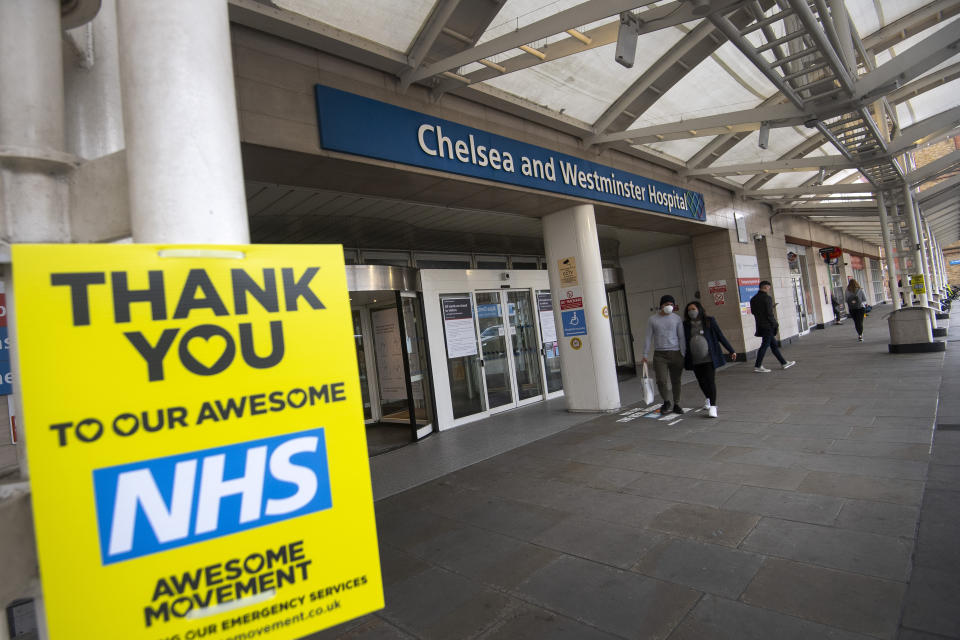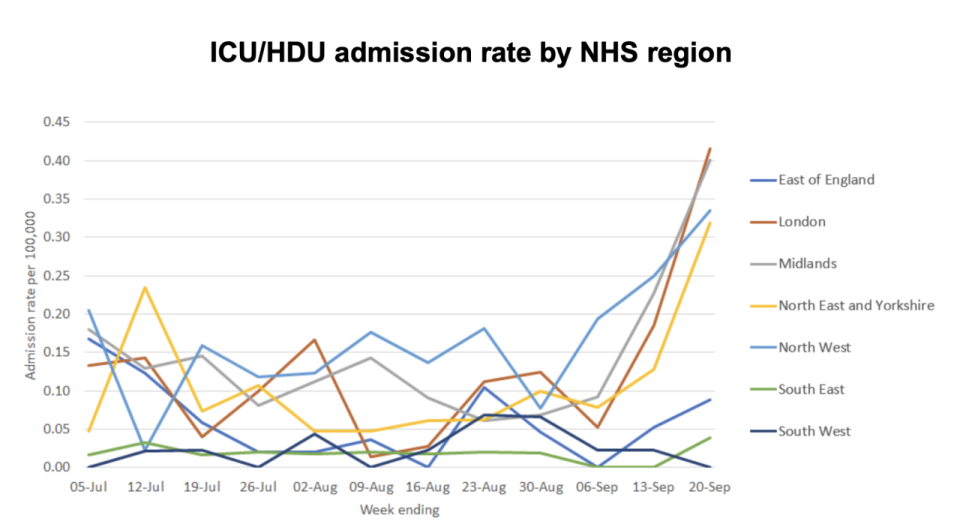Number of coronavirus patients in hospital in UK has doubled in two weeks


The number of people in hospital with coronavirus has doubled in two weeks as cases continue to rise across the country.
The government said there were 2,276 people in UK hospitals as of October 1, just over double the 1,107 who were receiving treatment on September 17.
There has been a steady increase in hospital admissions throughout September and shows no signs of changing over the first week of October.
There were 6,914 new cases of coronavirus in the UK Thursday, slightly down the past two days where numbers were above 7,000.
During the height of the pandemic in April there were around 19,000 people in hospital with coronavirus in the UK.

Read more: Only UK area to come out of local lockdown back on the government’s watchlist
England’s chief medical officer Prof Chris Whitty, said yesterday at a press briefing: “In the North East, North West but also in London, we are seeing a significant uptick in the number of people who are entering intensive care.
“This is not yet at a stage where it is threatening our ability to have intensive care – there is still significant capacity in the NHS system – but this is definitely heading the wrong way.”
Whitty presented a graph at the briefing that showed ICU admissions in London jumped from 0.18 per 100,000 people in the week ending 13 September to 0.42 per 100,000 in the week ending 20 September.
There were similar figures for the Midlands, North West, and the North East and Yorkshire.

Read more: Liverpool, Warrington and parts of North East face tighter coronavirus restrictions
The government has continued to encourage people to follow the guidelines with Boris Johnson insisting as long as people obeyed the rules the country would be able to avoid another full lockdown.
There are signs the government’s new measures are beginning to slow the rate of infection in the UK.
A study found restrictions across the north of England may be pushing down the growth of the coronavirus epidemic, the leader of a large-scale Covid-19.
Professor Paul Elliott, director of the React study – the largest research of its kind in England – said new rules appeared to be taking effect but warned that all age groups were contracting the virus.
Prof Elliott told BBC Radio 4’s Today programme that his study had found a seven-fold increase in the number of people carrying the virus at the age of 65 and over.
Watch: UK coronavirus cases rising - why are deaths still low?
He added: “In the very recent data, and we’re talking about people who did swabs last Saturday, it does seem that the rate of increase of the infection may have slowed a bit.
“So that does suggest that perhaps some of the recent announcements and the biggest focus again on people paying attention to the public health message, which is social distancing, handwashing, face covers and getting tested if they have symptoms and then isolation, seems to be beginning to work.”
Prof Elliott said the numbers of people who now have the virus has “grown substantially” but the growth appeared to be slowing.
“We’ve seen the doubling time – from the last time we did the survey to now – has reduced to about 10 days from seven to eight days, so that has been slowing,” he said.
“In the very recent data, it does seem to be that increases seems to be turning down, but from high levels of the virus.
Read more: One in 10 critically ill COVID patients has a cardiac arrest, study suggests
“So we really need to get the virus turning down and the R value going below one and we haven’t yet seen that.
“At the moment, we seem to be still at very high levels of the virus, and we do seem to still have a bit of an upward trajectory, but that very fast increase in the virus seems to have slowed and that’s very encouraging.”
Prof Elliott urged people to “redouble” their efforts to follow the guidance, adding the country is in “a very critical period right now”.
He said there was “wide uncertainty” around the reproductive number – the R number – which the study estimates to be around 1.1.
Coronavirus: what happened today
Click here to sign up to the latest news and information with our daily Catch-up newsletter

 Yahoo Sports
Yahoo Sports 